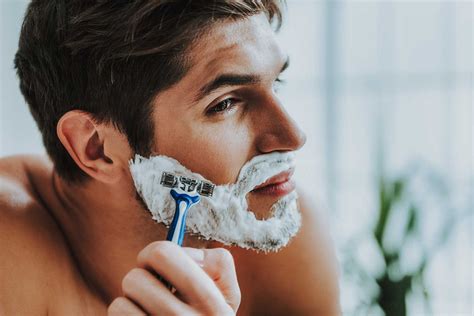What precise shaving technique eliminates ingrown hairs for a flawless finish?

Conquering Ingrown Hairs: The Path to a Flawless Shave
Ingrown hairs are a common nuisance for many, transforming what should be a smooth, satisfying shave into an irritating battle against bumps, redness, and discomfort. Often mistaken as an inevitable side effect of hair removal, ingrown hairs are largely preventable with the right approach. The secret lies not just in the products you use, but in a precise, disciplined shaving technique that respects your skin and hair.
Understanding the Enemy: What Causes Ingrown Hairs?
An ingrown hair occurs when a hair strand, instead of growing outwards from the follicle, curls back or grows sideways into the skin. This often happens after shaving, waxing, or plucking, especially with curly or coarse hair. The body recognizes the ingrown hair as a foreign object, triggering an inflammatory response that results in the characteristic red, itchy, and sometimes painful bumps. Factors like improper shaving angles, dull blades, and lack of skin preparation can significantly increase your susceptibility.
The Foundation: Meticulous Preparation is Key
The journey to a flawless, ingrown-hair-free shave begins long before the razor touches your skin. Proper preparation softens the hair, opens pores, and creates an optimal surface for shaving.
- Exfoliate Gently: 12-24 hours before shaving, use a mild physical or chemical exfoliant to remove dead skin cells that can trap hairs. This clears the path for hairs to grow outwards freely.
- Warm Water & Steam: Take a warm shower or apply a warm, damp towel to the area for a few minutes. This softens the hair follicles and relaxes the skin, making hairs easier to cut.
- Pre-Shave Oil: A thin layer of pre-shave oil provides an extra layer of lubrication, protecting the skin from direct blade contact and ensuring a smoother glide.

The Tools of the Trade: Quality Matters
While technique is paramount, the right tools are indispensable:
- Sharp Razor: Invest in a high-quality razor (safety razor or multi-blade cartridge razor) with sharp, clean blades. Dull blades drag and pull at hairs, leading to irritation and uneven cuts that promote ingrown hairs. Change blades frequently.
- Rich Shaving Cream/Soap: A thick, lubricating lather creates a protective barrier and helps lift the hairs, making them easier to cut cleanly. Avoid aerosol foams with harsh chemicals that can dry out the skin.
The Precise Shaving Technique: Step-by-Step Mastery
This is where precision prevents problems:
- Lather Up Generously: Apply a substantial amount of your chosen shaving cream or soap, ensuring the entire area to be shaved is covered with a rich, creamy lather. Let it sit for a minute or two to further soften the hair.
- Shave With the Grain, Always: This is arguably the most critical step. Identify the direction your hair grows (the grain) and shave exclusively in that direction for your first pass. Shaving against the grain cuts the hair too short, allowing it to easily retract beneath the skin surface and become trapped. Use short, light strokes, allowing the razor’s weight to do the work.
- No Pressure: Do not press the razor into your skin. Light pressure prevents razor burn and reduces the chance of cutting the hair below the skin’s surface.
- Rinse Razor Frequently: After every few strokes, rinse your razor under warm water to clear away hair and shaving cream buildup. A clogged razor is an inefficient, irritating razor.
- Second Pass (If Necessary, Across the Grain): For an even closer shave, reapply lather and make a second pass *across* the grain. Avoid going against the grain entirely. If your skin is highly sensitive to ingrowns, skip the second pass altogether.
- Stretch, Don’t Pull: Gently pull your skin taut (but not overly stretched) to create a flat surface for the razor. This helps the blade cut more effectively without snagging.

Post-Shave Perfection: Soothe and Protect
What you do after shaving is just as important as the shave itself:
- Rinse with Cold Water: A final rinse with cold water helps close the pores and calm the skin, reducing inflammation.
- Apply Aftershave Balm/Moisturizer: Pat your skin dry with a clean towel and immediately apply an alcohol-free aftershave balm or a gentle moisturizer. Look for ingredients like aloe vera, witch hazel, or salicylic acid (in low concentrations) which can soothe skin and prevent future ingrown hairs.
- Avoid Tight Clothing: Give your skin time to breathe after shaving, especially in areas prone to ingrown hairs. Tight clothing can cause friction and irritate newly shaved skin.

Ongoing Prevention and Maintenance
Consistency is key to keeping ingrown hairs at bay:
- Regular Exfoliation: Continue a gentle exfoliation routine a few times a week to keep pores clear.
- Hydrate Your Skin: Keeping your skin well-moisturized makes it more supple and less prone to irritation.
- Clean and Store Razors Properly: Ensure your razor is clean and dry after each use to prevent bacterial growth and dulling of the blades.

Conclusion
Eliminating ingrown hairs for a flawlessly smooth finish is an achievable goal, not a distant dream. By adopting a precise shaving technique that prioritizes meticulous preparation, uses the right tools, follows the hair’s natural growth pattern, and includes thoughtful post-shave care, you can transform your shaving routine into an effective strategy against irritation. Embrace these steps, and enjoy the confidence that comes with consistently smooth, healthy skin.







